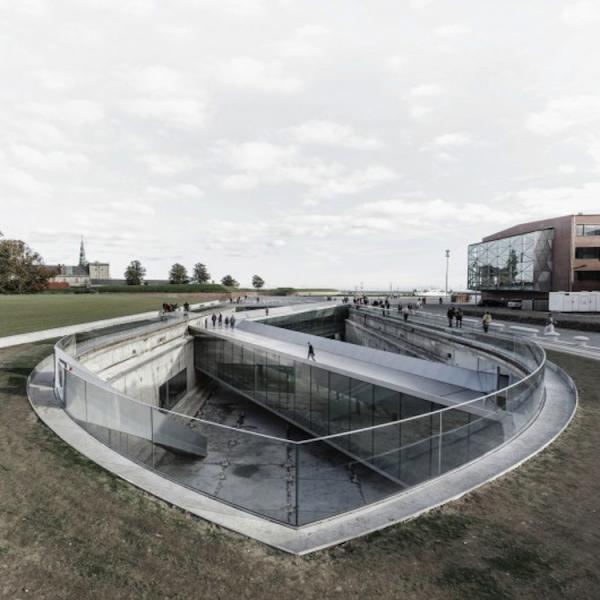The five finalists for the 2015 European Union Prize for Contemporary Architecture, or the Mies van der Rohe award. The finalists were chosen from a shortlist of 40 projects and include a sunken museum and a crystalline concert hall.
Considered to be some of the best works completed by European architects in the previous two years, the projects are in the running for a prize of more than $65,000.
The five finalists for the Mies van der Rohe award are:
- Philharmonic Hall Szczecin designed by Estudio Barozzi Veiga in Szczecin, Poland
- The Saw Swee Hock Student Centre by O'Donnell + Tuomey at the London School of Economics in London
- Ravensburg Art Museum designed by Lederer Ragnarsdóttir Oei in Ravensburg, Germany
- Danish Maritime Museum designed by Bjarke Ingels Group in Helsingør, Denmark
- Antinori Winter by Archea Associati in San Casciano Val di Pesa, Florence, Italy
The architects will present their projects to the jury on May 7.
 Philharmonic Hall Szczecin designed by Estudio Barozzi Veiga in Szczecin, Poland. Photo by Simon Menges
Philharmonic Hall Szczecin designed by Estudio Barozzi Veiga in Szczecin, Poland. Photo by Simon Menges
 The Saw Swee Hock Student Centre by O'Donnell + Tuomey at the London School of Economics in London. Photo by Alex Bland
The Saw Swee Hock Student Centre by O'Donnell + Tuomey at the London School of Economics in London. Photo by Alex Bland
 Ravensburg Art Museum designed by Lederer Ragnarsdóttir Oei in Ravensburg, Germany. Photo by Roland Halbe
Ravensburg Art Museum designed by Lederer Ragnarsdóttir Oei in Ravensburg, Germany. Photo by Roland Halbe
 Danish Maritime Museum desinged by Bjarke Ingels Group in Helsingør, Denmark. Photo by Rasmus Hjortshoj
Danish Maritime Museum desinged by Bjarke Ingels Group in Helsingør, Denmark. Photo by Rasmus Hjortshoj
 Antinori Winter by Archea Associati in San Casciano Val di Pesa, Florence, Italy. Photo by Pietro Savorelli
Antinori Winter by Archea Associati in San Casciano Val di Pesa, Florence, Italy. Photo by Pietro Savorelli
Related Stories
Architects | May 3, 2018
Designing innovative solutions for chronic homelessness
What’s stopping us from creating more Permanent Supportive Housing?
Architects | Apr 27, 2018
4 reasons to pursue speaking engagements
We found speaking engagements were among the top ten marketing techniques that AEC firms employ.
Office Buildings | Apr 19, 2018
From fitness to bowling alleys: How commercial office buildings are differentiating themselves through amenities
Here are five ways that amenities can help developers and building owners attract and secure tenants by appealing to their inhabitants.
Architects | Apr 19, 2018
Perkins Eastman and Dougherty announce intent to merge
Combined practice will create expanded capabilities for K-12, higher education projects in California.
Architects | Apr 17, 2018
Cannon Design expects merger with gkkworks will help streamline its deliveries
The combined firm reinforces its presence in the western U.S.
Architects | Apr 16, 2018
Is the AEC industry ready to shake off its retrograde image?
Technology has been and always will be perceived as a source for wonder and worry.
Architects | Apr 10, 2018
HOK names a physician as its new Chief Medical Officer
Dr. Andrew Ibrahim will collaborate with the firm’s medical planning and design teams.
Architects | Apr 5, 2018
AIA grants $100,000 to four Upjohn Research Initiative projects
The purpose of the grant is to provide base funds for applied research projects that will advance the design profession’s knowledge and practice.
Architects | Apr 5, 2018
Tech Report 5.0: The Human Touch
Can studying humans at a behavioral level produce better buildings? Cognitive architecture experts are working to find out.
Architects | Apr 4, 2018
How to acquire speaking engagements and hone your skills
So, you understand the benefits, but how do you actually get started with speaking engagements?















